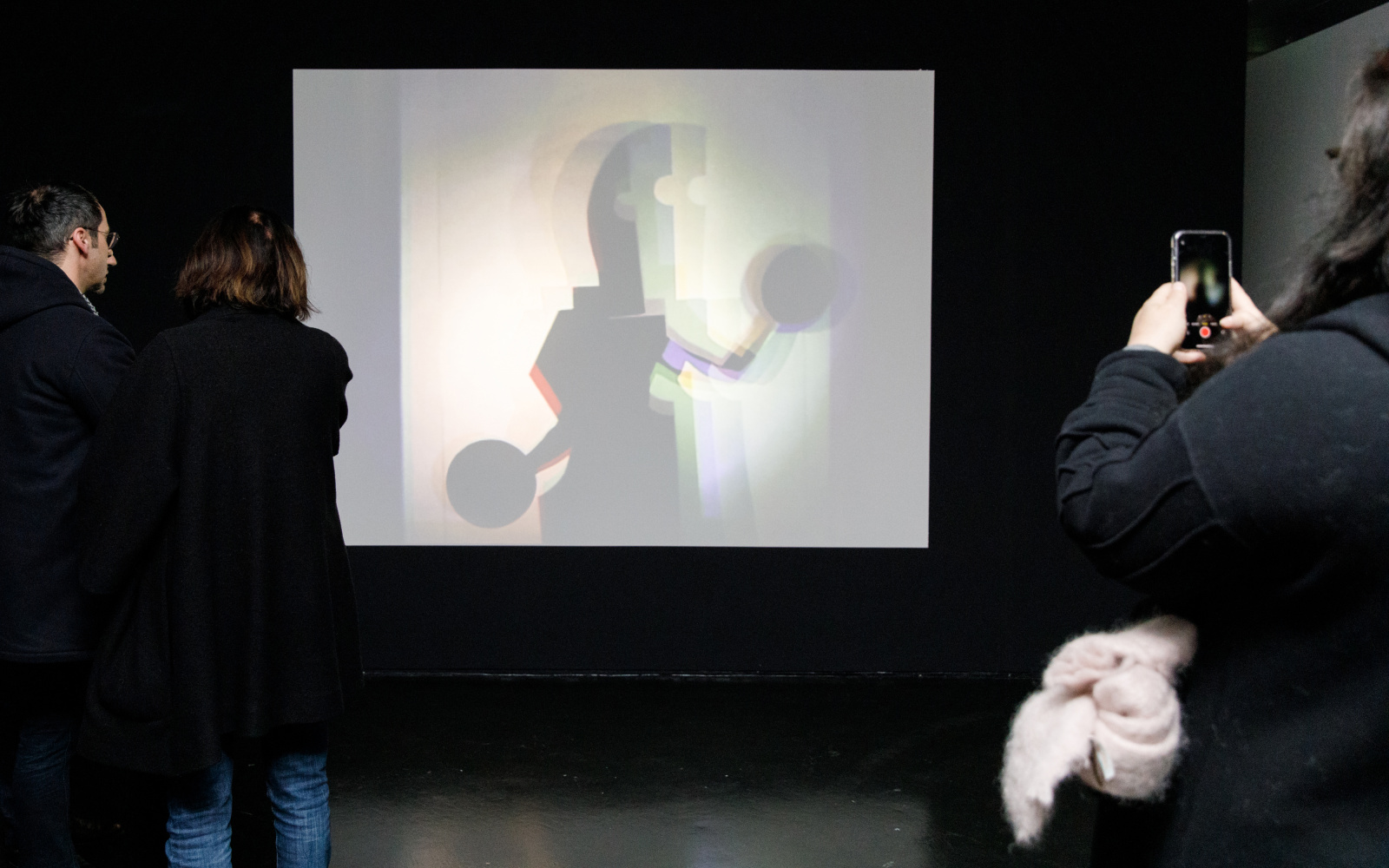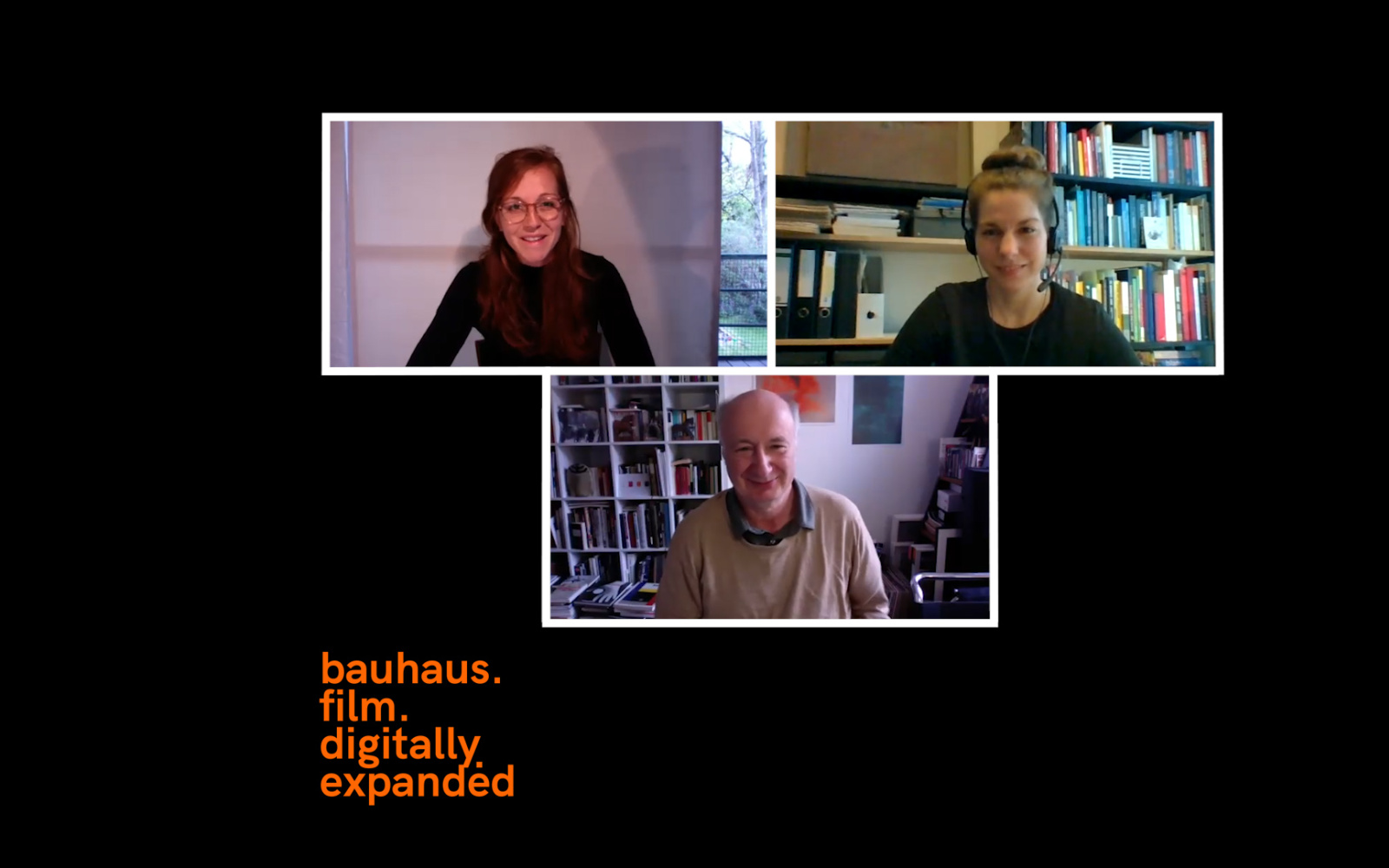Extended Forms of Films
in the exhibition »bauhaus.film.expanded«
»Neither painting nor photography, the motion pictures nor light display can be any longer jealously separated from each other« (László Moholy-Nagy)
The light projections, film clips in the theater, film performances and film scores by Bauhaus members are grouped together under the heading »Extended Forms of Films«. The films for theater productions, including Erwin Piscator’s plays, proclaimed their intention to abandon and extend the conventional methods of individual art forms. The Bauhaus did not want to train conventional photographers, visual artists, and film directors, but rather to enable occupational profiles that were situated between the established disciplines – so-called »visual designers.«
Dances, parties, and camouflage techniques embodied the expansion of the concept of art postulated at the Bauhaus. Oskar Schlemmer’s dance film of 1926 was a departure to a new horizon of movement far removed from classical ballet. Kurt Schwerdtfeger and Ludwig Hirschfeld-Mack designed colored light projections that were always presented live. These light projections could only be documented on film after the war. In these extended forms of film, constantly moving colored light was distributed across a screen by means of a stencil technique: Painting with light instead of pigment.
The question of putatively »pure« form was much discussed at the Bauhaus and opinions were divided. Wassily Kandinsky sought for spirituality in art by using pure colors and forms, however, he rejected the aspiration of some of his colleagues for a strict formal purism:
»(...) you can’t turn a form into a uniform. Works of art are not soldiers.«
Films in the exhibition »bauhaus.film.expanded«
-
Extended Forms of Films
Bernhard Redetzki, »Motiv am Meer« [Motif at the sea], DE 1958–1960
35mm, b/w, silent, 02:45 [12:15] by 24 frames/sec
filmed of a 35mm positive
© Axel MalzacherHans Cürlis, »Schaffende Hände: Kandinsky« [Creating hands: Kandinsky], DE 1926
35mm, b/w, silent, 02:38 [08:16] by 24 frames/sec
Digital copy of 35mm positive
Courtesy Peter CürlisUtz Brocksieper, »In the Studio: Heinrich Brocksieper«, DE 1966
35mm, b/w, silent, 4:22 by 24 frames/sec
Digital copy of a 8mm Positive: ZKM | Karlsruhe
© Utz BrocksieperLászló Moholy-Nagy, »ABC in Sound«, DE 1933
35mm, b/w, sound, 01:55 by 24 frames/sec
Digital copy of 35mm film: British Film Institute
© British Film InstituteKurt Schwerdtfeger, »Reflecting Color-Light Play«, DE 1922/1923/1967
16mm, color, silent, 17:05 by 24 frames/sec
Digital copy of a 16mm positive
© Paula SchwerdtfegerLászló Moholy-Nagy, »Ein Lichtspiel schwarz-weiß-grau«, DE 1930
35mm, b/w, silent, 08:16 by 16 frames/sec
Digital copy of 35mm film: Light Cone
© Light Cone & the Moholy-Nagy FoundationLudwig Hirschfeld-Mack, »Farbenlichtspiele: S-Tanz (Soviet-Tanz)«, DE 1923/AT 2000
Reconstruction by Corinne Schweizer and Peter Böhm, DVD PAL, color, music: Ludwig Hirschfeld-Mack, arranged by Peter Böhm, 04:57 at 25 frames/sec
© Corinne Schweizer, Peter BoehmLudwig Hirschfeld-Mack, »Kreuzspiel«, DE 1923/1964–1967
16mm, b/w, silent, 05:47 [09:15] by 24 frames/sec
Digital copy of a 16mm positive
© Kaj DeluganKurt Schwerdtfeger, »Reflecting Color-Light Play [documentary film]«, DE 1922/1923/1967
16mm, color, silent, 04:52 by 24 frames/sec
Digital copy of a 16mm positive
© Paula SchwerdtfegerOskar Schlemmer, »Oscar Schlemmer Stage Ballet«, DE 1926
35mm, b/w, silent, 01:37 by 16 frames/sec
Digital copy of a 35mm positive: Das Bundesarchiv-Filmarchiv / ZKM | Karlsruhe
bauhaus.film.digitally.expanded: Erweiterte Filmformen
Some films in this section were available online until August 23, 2020. The release was accompanied by a live discussion on April 16, 2020 at 6 pm between Markus Heltschl and Paula Schwerdtfeger, moderated by Teresa Retzer.

